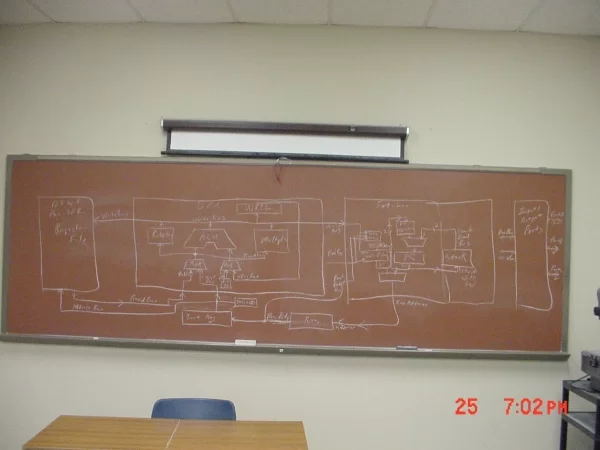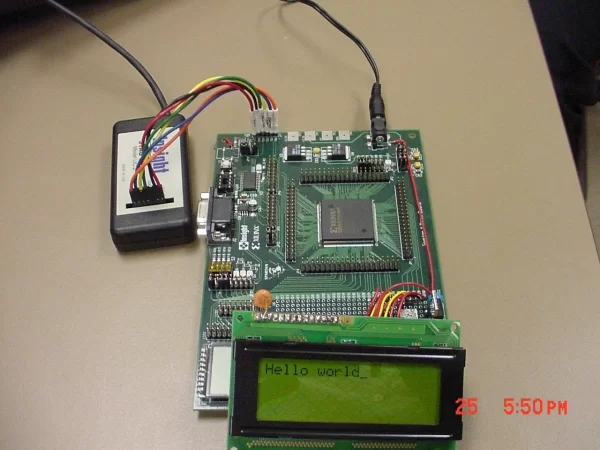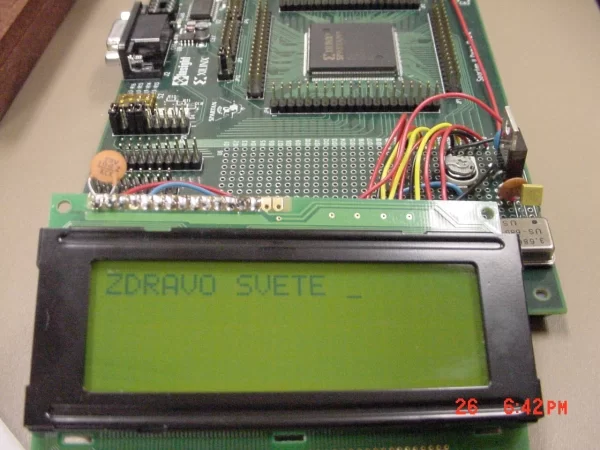Description
The goal of the PIC18C project is to design, develop a synthesizible VHDL model, verify it using test programs, and implement a core of the Microchip PIC18C microcontroller. The microcontroller core is fully compatibile with the PIC18 series allowing program development using high-level programming languages such as C.
The project phases are described below.
1. Design
The design phase involves the detailed study of the architecture and instruction set. The key elements of the architecture are defined: instruction fetcher, decoder, register file, etc. The instruction set is examined and grouped to facilitate decoding.
2. VHDL Model Development
The key architectural components derived from the design phase are used to form the VHDL model hierarchy. The hierarchy is shown below.
PIC
Data Processing Unit (DPU)
Arithmetic-Logic Unit (ALU)
Multiplier
Rotater
Bit-Operation Processor (BOP)
Instruction Decoder
Fetcher
Instruction Register
Program Counter
Hardware Return Stack
Block RAM
Constant Data Fetcher
Register File
Block RAM
Reset
Watchdog Timer
ROM
Block RAM
3. Verification
The initial PIC operation verification is done by writing a single assembly language test file for each instruction. The program was assembled using Microchip’s MPLAB development system. A simple C program is used to convert the output of the Assembler (HEX format) into a format suitable for cut-and-paste into the ROM array.
4. Implementation & Demonstation
The PIC is sucessfully synthesized and implemented using Spartan-II Development Kit with Xilinx Spartan-II XC2S100 FPGA. The PIC operation is demonstrated by displaying a “Hello world” type string onto a standard text-based LCD module. This milestone is reached on April 20th.
Photo Album



Source: Building a PIC18C and System-on-a-Chip in an FPGA
